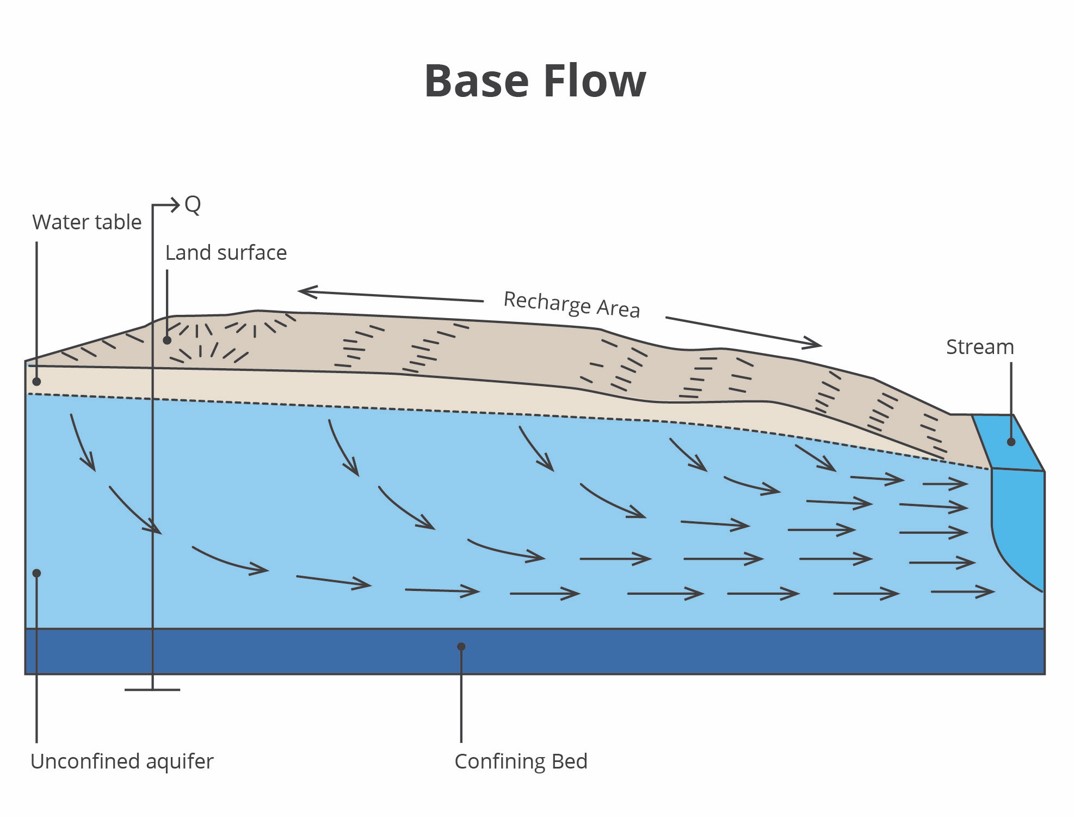When it comes to addressing green infrastructure, we need to start thinking deep—as in deep aquifer recharge.
The U.S. Environmental Protection Agency (EPA) and other government agencies promote green infrastructure, defined as a “cost effective, resilient approach to managing wet weather impacts that provides many community benefits,” to overcome the effects of climate change, including flooding.
While some government agencies are focused on reducing the impacts of flooding by getting water off the ground, the U.S. Geologic Survey (USGS) is concerned with the lack of water deep in the ground.
The Problem: Aquifer Depletion
There are many aquifers throughout the U.S., and over the last 70 years, they have become increasingly depleted. When these aquifers are not recharged, negative consequences result, including:
- Decreased water supply
- Decreased natural recharge areas
- Land subsidence
- Formation of sinkholes
- Underground utility damage
- Saltwater intrusion in coastal areas
- Sea level rise
Land subsidence is a gradual settling or sudden sinking of land surface from changes that take place underground. Relative sea level rise (RSLR) represents the combined effects of sea level rise plus land subsidence, which accelerates the apparent rate of sea level rise. Subsidence can account for a substantial portion of sea level change and cause incalculable damage, especially in urban coastal areas such as Venice, Italy; Houston-Galveston, Texas; New Orleans, Louisiana; and coastal Virginia.
The USGS estimates a rise in sea level of three millimeters per year due to deep groundwater extraction from the U.S. alone. Additionally, the USGS estimates that these aquifers will not naturally replenish until after the next ice age.
The Solution: Deep Green Infrastructure
Clearly this is a problem, but how do we solve it?
Currently, most green infrastructure featured in wet weather climates is sited at the lower reaches of watersheds where flooding is prevalent. It diverts stormwater into the water table aquifer, where the water migrates to local streams and eventually to the ocean via base flow. This is effective in temporarily diverting stormwater during rain events but it does not recharge the aquifer. It contributes to sea level rise as the excess water travels to the ocean.
 In wet weather climates, most current green infrastructure diverts stormwater into the water table aquifer, which migrates to local streams then the ocean via base flow. Original graphic source: "The River Beneath the Missouri River by David Stous P.E., P.G." on kcdv.tv
In wet weather climates, most current green infrastructure diverts stormwater into the water table aquifer, which migrates to local streams then the ocean via base flow. Original graphic source: "The River Beneath the Missouri River by David Stous P.E., P.G." on kcdv.tv
Implementing green infrastructure in the upper reaches of a watershed would promote stormwater capture and recharge. Further diverting the runoff to the deep subsurface before it migrates to areas that are prone to flooding would reduce flooding, recharge aquifers, and remove excess water from the water cycle."
John Robinson Jr.
This methodology could be used in a variety of project types. Indirectly, it could be used in urban planning to site green infrastructure. Directly, it could be used in surficial aquifer recharge areas, raingardens, bioswales, and streetscapes equipped with deeper well drains to divert stormwater into deeper aquifers.
Climate change is a naturally occurring phenomena with fluctuations evident throughout the Earth’s geologic history, but human activities are contributing to the issue. We can work closely with Mother Nature to solve these environmental problems much more effectively!